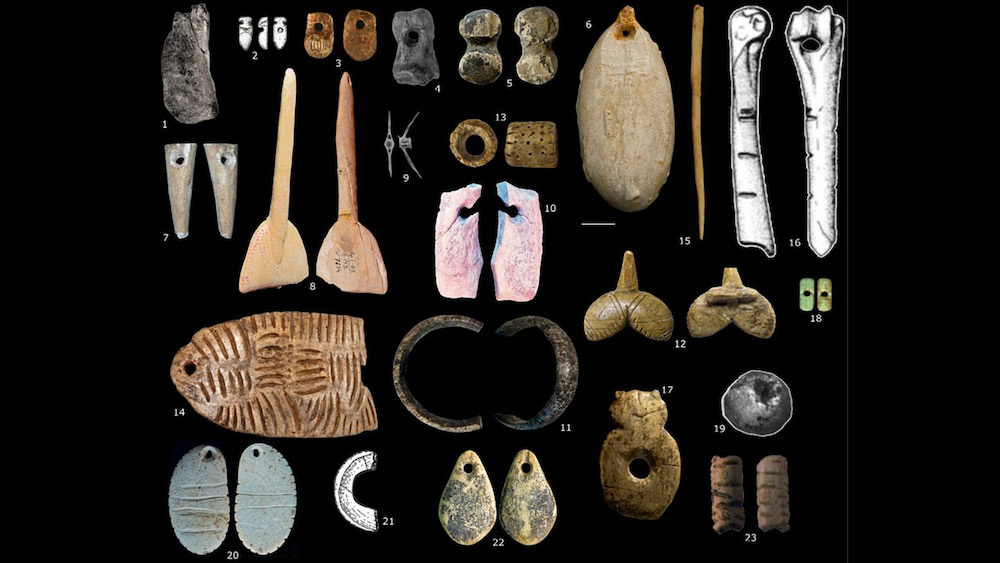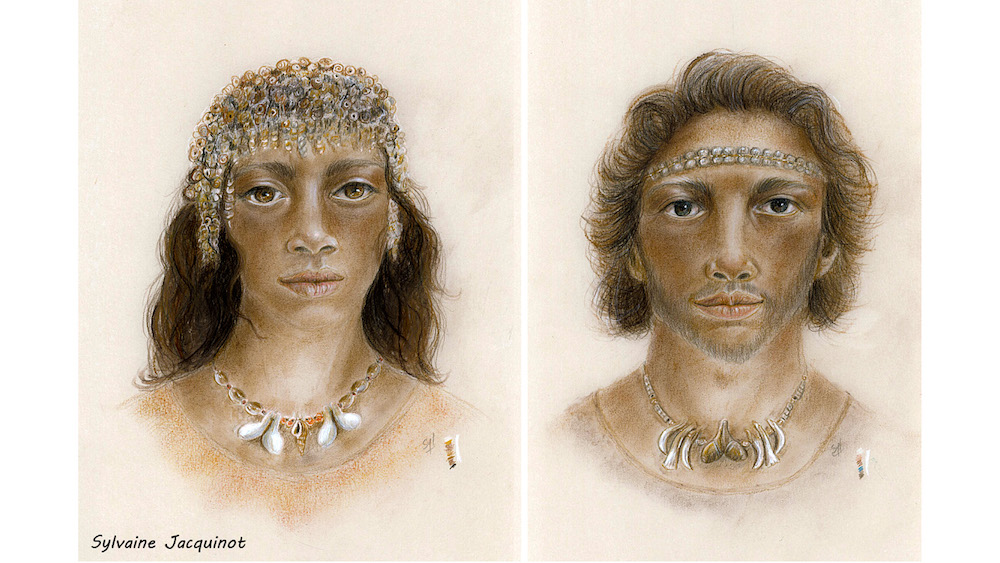Prehistoric jewelry reveals 9 distinct cultures across Stone Age Europe
Prehistoric humans adorned themselves with different types of beads depending on their culture and location in Europe.

Tens of thousands of years ago, prehistoric humans in Europe adorned themselves with such a wide variety of beads that researchers have classified nine distinct cultural groups across the continent based on their location and distinctive styles.
The researchers focused on the Gravettian period, which stretched between 34,000 and 24,000 years ago and was defined by hunter-gatherers who were also adept artisans, according to a study published Monday (Jan. 29) in the journal Nature Human Behaviour.
The Gravettians' crafting skills can be seen in the variety of materials they used to make beads, such as ivory, bones, teeth (including those from bears, horses and rabbits), antlers, jet gemstones, shells and amber. These beads likely served as personal ornaments as well as cultural markers.
For the study, the researchers analyzed 134 "discrete types" of adornments collected by archaeologists over the past century or so from 112 sites around Europe, according to a statement.
The team then inputted the information they collated from previous scientific studies and other literature into a database, which enabled them to begin identifying the distinctions between the different groups' beads.
"We started noticing differences as we were making the database," study lead author Jack Baker, a doctoral student of prehistory at the University of Bordeaux in France, told Live Science. "There's actually a big difference, especially between the west and the east."
Related: Stone Age hunter-gatherers may have exchanged 'BFF' friendship ornaments
Get the world’s most fascinating discoveries delivered straight to your inbox.
For example, researchers noticed that foxes and red deer, both of which were abundant across the continent during the period, were only incorporated into beads created by certain groups.
"At this time, foxes and red deer were everywhere," Baker said. "However, we only see people wearing fox canines in the east, even though you can get them everywhere. And we only really find people wearing red deer canines in the west. So even though they're available everywhere, there's a clear difference in what they're choosing."
There was also movement of materials between different groups, which can be seen for example at a burial site in Italy, where the remains of an adolescent boy were adorned with materials that originated hundreds of miles away.
"So, we know that things were being moved around," Baker said. "We know especially that teeth have been moved around and fossil shells [too]. Movement of materials was 100% happening."
Researchers determined that while geographical separation may partially explain these differences in bead selection between the nine groups, "culturally driven boundaries" was a much larger factor, according to the statement.
For instance, burials were a "common cultural trait in Early and Middle Gravettian people in Eastern Europe," but later on there was a shift away from burying the deceased, according to the study.
Researchers were able to confirm most of the cultural groups' existence based on existing genetic data in the archaeological record, but they couldn't identify one eastern European group as there was no known genetic data available. An additional two cultural groups in Iberia only had genetic data from the same single individual, according to the statement.
"Genetics is a really powerful tool, but genetics doesn’t really equal culture," Baker said. "So even though we know about these genetic groups, that doesn't necessarily reflect their culture, which I think is really an important message."
Jennifer Nalewicki is former Live Science staff writer and Salt Lake City-based journalist whose work has been featured in The New York Times, Smithsonian Magazine, Scientific American, Popular Mechanics and more. She covers several science topics from planet Earth to paleontology and archaeology to health and culture. Prior to freelancing, Jennifer held an Editor role at Time Inc. Jennifer has a bachelor's degree in Journalism from The University of Texas at Austin.



